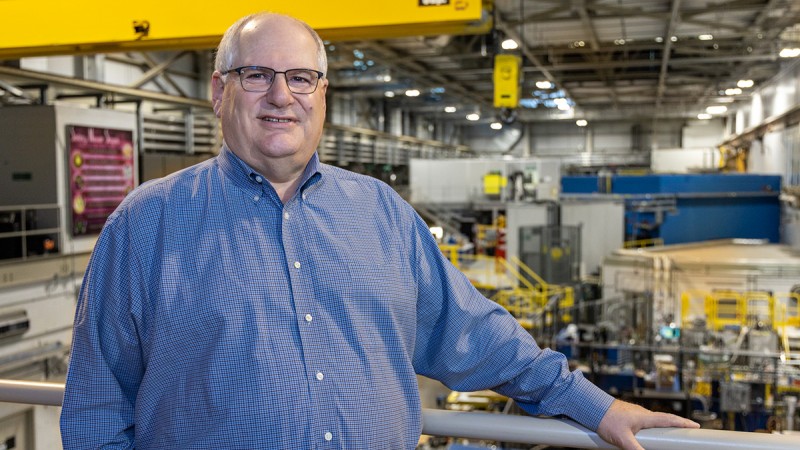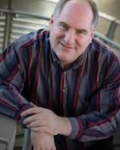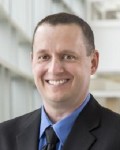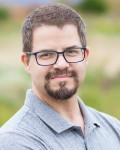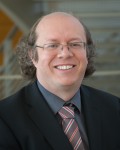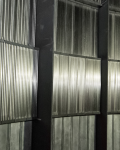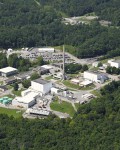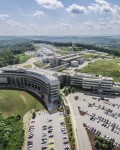The truth is neutron scattering is not important, according to Steve Nagler. The knowledge gained from using it is what’s important.
Nagler, a physicist and Corporate Fellow at the Department of Energy’s Oak Ridge National Laboratory, will retire on January 31, 2023. His distinguished career leaves a lasting impression on the field of neutron scattering and a legacy of developing the next generation of scientists who will follow in his footsteps, just like he followed the brilliant minds who came before him. Nagler plans to continue supporting the laboratory as a Corporate Fellow Emeritus.
“Our lives depend on materials. It is even in the naming of human eras like the Stone Age and Iron Age. Some say we are in the Silicon Age,” said Nagler. “We have always needed new knowledge to continue developing materials and technologies that improve lives. The neutron scattering research facilities here at ORNL draw researchers from all over the world to create such knowledge that is very difficult to get any other way.”
Nagler worked among a generation of scientists who seized the opportunity to probe quantum materials with neutrons. As a result, he is one of the leading figures in the field. Nagler uses neutrons to explore materials on an atomic scale. This knowledge can help develop advanced technologies such as quantum computing, which in the future could revolutionize information technology. Making important contributions, Nagler said, means targeting areas where the advantages of neutrons are the greatest.
Like x-rays, neutrons can be used to probe materials, providing an invaluable tool for understanding how and why materials behave as they do. However, neutrons interact with matter differently than x-rays. Neutrons are sensitive to properties such as little magnetic moments in individual atoms, yielding powerful insights at the boundaries of new knowledge for materials science. ORNL operates two premier DOE Office of Science user facilities — the High Flux Isotope Reactor, or HFIR, and the Spallation Neutron Source, or SNS — that allow such studies.
Leading and mentoring
Nagler has collected antique maps for 30 years, so it comes as no surprise that he can envision and clearly communicate complex big pictures. His talent for people and science has served ORNL exceptionally well. For example, he helped write the original science case for the SNS research facility, which began construction in the late 1990s and became operational in 2006. Along with HFIR, SNS helped to solidify ORNL’s reputation for world-class neutron scattering, a technique used to study the atomic structures and properties of materials.
Over the course of Nagler’s career, laboratory leadership depended on him as a go-to advisor for important decisions that affected the growth of neutron science at ORNL. Associate laboratory director of ORNL’s Neutron Sciences Directorate Ken Andersen said Nagler helped put SNS and HFIR on the map for research on quantum materials and magnetism.
“He created a cultural legacy for the science we produce here by valuing the role of the instrument scientist,” said Andersen. “We can’t represent successful user facilities if we do not have great scientists who can collaborate with our users to solve problems. That is the model Steve really helped create here.”
Nagler’s colleagues and peers perhaps most fondly recognize him by his dedication to recruiting and mentoring the next generation of neutron scientists, postdoctoral researchers, and students. Many of these fledgling scientists came to ORNL based on Nagler’s reputation.
“This is part of what makes him so good. It is about the person he’s mentoring,” said Spectroscopy Section Head Mark Lumsden. “By attracting and cultivating new talent over the years, Steve has helped define neutron spectroscopy at ORNL.”
Spectroscopy is one of several neutron scattering techniques. It measures interactions between atoms and magnetic moments in matter to better understand different materials.
Early influences
When Nagler was a teenager, he spent time on a survey crew and discovered a unique skill: he could perform related calculations faster in his head than his partner could do it using a calculator. This experience crystallized his love for applied math. During his first year of college, he took an honors physics course, which furthered his love for physics, a subject Nagler said struck him as refreshingly honest.
During his third year, he landed a summer job with the National Research Council of Canada where he worked in the same group as 1971 Nobel laureate in Chemistry, Gerhard Herzberg. A self-described physicist, Herzberg is known as the founding father of molecular spectroscopy.
This experience motivated Nagler to continue his studies in physics. While pursuing his doctorate at the University of Toronto, Nagler connected with a group of scientists working on neutron scattering at Chalk River Laboratories in Ontario. The Chalk River program was the legacy of another Nobel laureate, Bertram Brockhouse, who was recognized in 1994 alongside ORNL’s Clifford Shull for “pioneering contributions to the development of neutron scattering techniques for studies of condensed matter.”
After completing his doctorate, Nagler moved away from neutrons for about 10 years to pursue x-ray scattering and synchrotron radiation. He spent time at IBM Research in Yorktown Heights, New York, and then, in 1984, Nagler moved to Florida and joined the University of Florida as an assistant professor of physics. He became a full professor in 1993. During this time, he helped found the Materials Research Collaborative Access Team beamline at the Advanced Photon Source at Argonne National Laboratory and was recognized by the National Science Foundation with the Presidential Young Investigator award.
Life at ORNL
In 1995 Nagler left his tenured position at UF to join ORNL in large part because of the laboratory’s serious interest in building an accelerator-based research facility dedicated solely to neutron scattering. ORNL offered Nagler job stability for raising a young family. The lab recognized Nagler as Scientist of the Year in 1998. In the years following, he continued to receive multiple prestigious awards, honors and recognitions from various societies and organizations, including the UT-Battelle Team Award for Outstanding Scientific Research in 2009 and 2016.
Nagler is a fellow of the American Association for the Advancement of Science, the American Physical Society and the Neutron Scattering Society of America. He has served on multiple editorial boards, notably including two terms as a divisional associate editor of Physical Review Letters. Most recently, Nagler accepted a position as the lead editor of Physical Review B starting in February 2023. He has also been a visiting scientist or professor at several U.S.- and internationally based labs and universities.
However, Nagler’s humanity stands out at least as much as his professional distinctions.
“I would thank Steve for second chances. He is the reason I am here,” said physicist Matthew Stone. “The first time I interviewed with him, I turned him down and took a different job as a postdoc. When I was looking for the next postdoc, Steve was at the top of my list and he welcomed me for another interview.”
Stone works as an instrument scientist at SEQUOIA, an instrument at SNS that Nagler helped conceive.
Nagler’s colleagues and peers also recognize him for his knack for pairing a sample with the right instrument to get the most out of the measurements. This understanding is rare given the incredible breadth and depth of knowledge needed to match a material with one or more of the 30 instruments available at SNS and HFIR.
No one knows this about Nagler better that Alan Tennant, ORNL’s former Quantum Materials Initiative lead and Neutron Sciences’ chief scientist and current professor in the University of Tennessee’s Department of Physics and Astronomy. The two first crossed paths at the University of Oxford. Tennant later worked as one of Nagler’s first postdoctoral researchers at ORNL. Together, they were the first to observe quantum twists on a time-of-flight instrument using neutron scattering on a single potassium copper fluoride crystal. This observation became a prime example of what scientists could measure with pulsed neutrons that reactors could not measure.
“That was where the gold was found,” said Tennant. “He was a key person for connecting what the fast-evolving science could do with the instrument that would deliver the greatest impact. And he saw the potential in people. That is a massive contribution.”
— Sumner Brown Gibbs


